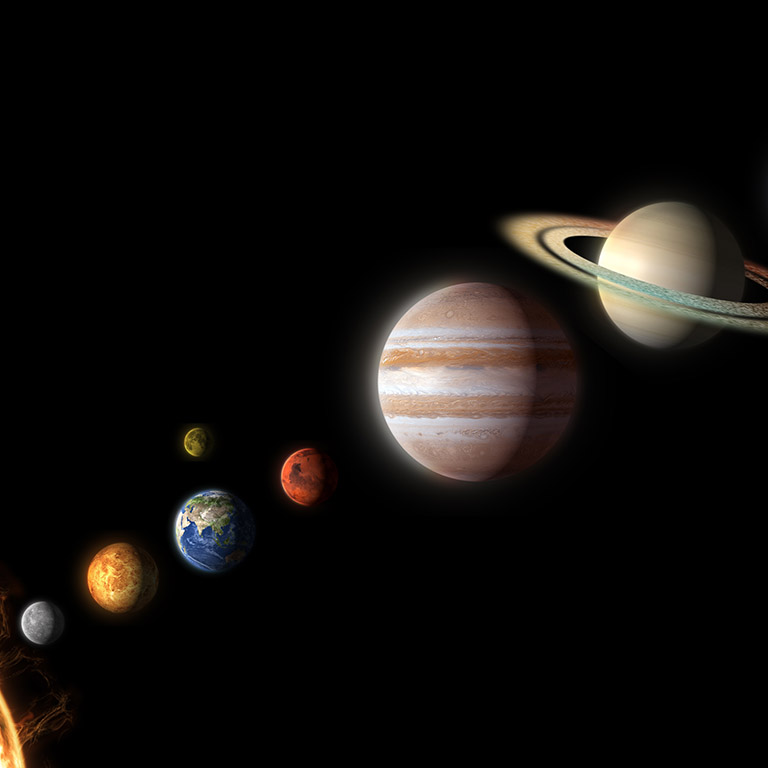BLOOMINGTON, Ind. -- The pre-dawn June sky will show a string of six planets along the ecliptic. In order of increasing elongation from the sun, they will be Jupiter, Mercury, Uranus, Mars, Neptune, and Saturn. Several will be visible to the unaided eye, but Uranus and Neptune will both require binoculars to spot.
First to appear will be Saturn, rising just before 2 a.m. local daylight time in the constellation Aquarius.
Mars will come into view next at around 3;30 a.m. on June 1. The Red Planet will be growing in prominence for the rest of the year.
Jupiter will reappear in the morning sky in June, and it will rise earlier each day. Jupiter and Mercury will be only 5 degrees apart at the start of the month, but the sky will brighten quickly, making observation of the pair difficult.
Mercury will quickly sink from the morning sky and reappear in the evening sky by month's end, when it will stand 6 degrees high a half hour after sunset.
Venus will be out of sight behind the sun during June.
Solstice
The sun will reach the June solstice at 4:51 p.m. EDT on June 20, marking the start of summer in the Northern Hemisphere and winter in the Southern Hemisphere. For the next six months in the Northern Hemisphere the days will be getting shorter. The word "solstice" is derived from two Latin words that mean "the sun stands still." This is because the summer sun climbs to a higher point in the southern sky each day until the solstice. On the day of the solstice it appears to arrive at about the same maximum height above the horizon as the day before, and each day afterward its maximum point is lower as it drops back toward its lowest point at the December solstice. In this sense the sun "stands still" at the peak of its journey across the summer sky before it starts downward again toward the southern horizon.
Moon phases
The moon will be new on June 6, at first quarter on June 14, full on June 21, and at last quarter on June 28.
Author: Hal Kibbey Email: hkibbey [at] gmail.com




 The College of Arts
The College of Arts